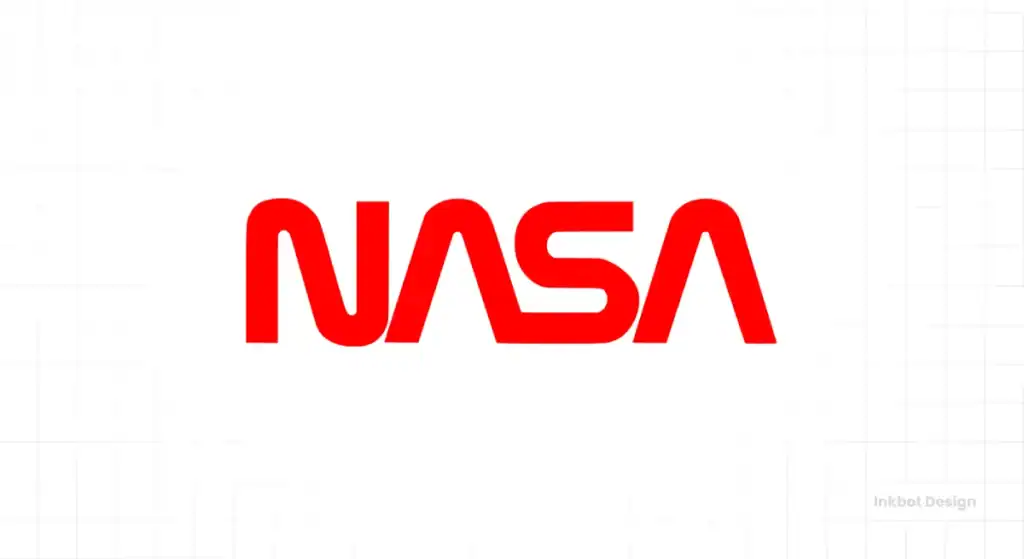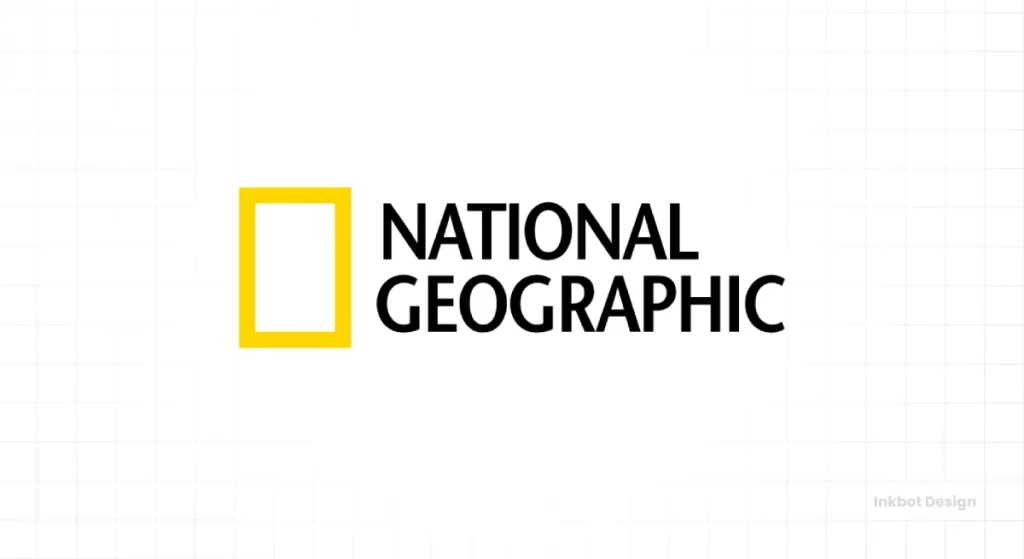The 10 Best Science Logos of All Time
Most science logos are a predictable mash-up of clichés.
An atom, a DNA helix, a gear, a stylised brain. They happen when a committee asks a designer to “make it look scientific.”
The result is a meaningless graphic communicating nothing except a total lack of imagination.
A great logo doesn't show what you do. A great logo shows what you promise. It’s not about the process; it's about the purpose. It’s not about the lab equipment; it’s about the breakthrough.
This isn't just a list. It's a deconstruction of the few brands that got it right.
We will look at why they work and what brutally honest lessons you, as a business owner, can steal from them.
What Makes a Science Logo “Good”?
Before diving into the list, we need to agree on the game's rules. A logo isn't a piece of art to be judged on aesthetics alone. It’s a tool. Its job is to identify, differentiate, and communicate.
For science-based brands, the stakes are even higher. You must convey intelligence, trust, and innovation, often all at once.
It’s Not About Showing Beakers and DNA Strands
Here's the first and most important lesson: stop trying to depict the science literally. Your logo is not an instruction manual. Pfizer's logo isn't a pill. Apple's logo isn't a microchip.
A great logo is a symbol, not a diagram. When you slap a generic atom on your name, you've told the world you think like everyone else.
It’s About the Promise, Not the Process
What is the ultimate benefit you provide? Are you promising precision? Discovery? A sustainable future? A new way of understanding the universe? That is what your logo should hint at. The promise is emotional. The process is technical. People buy into the emotion.
I once had a software startup client—a brilliant team, genuinely innovative product—who were convinced they needed a DNA helix in their logo. Their software analysed data. That's it.
Forcing a biotech cliché onto a data company was not only confusing, it was dishonest. We killed the idea, focused on their promise of ‘clarity from chaos', and ended up with a simple, powerful mark that worked.
A Quick Litmus Test: The Three Pillars
When I'm dissecting a mark, I look at three things. Forget talk of golden ratios and colour theory for a second. It boils down to this:
- Clarity: Is it distinct and straightforward? Can you recognise it instantly, even when it's tiny on a mobile screen or blurry from a distance?
- Memorability: Does it stick in your head? A complex design is forgettable. A simple, clever idea is not.
- Longevity: Will it look just as good in ten years? Timeless design avoids trends. The logos that last for decades are almost always the simplest.
Now, let's get to the list.
The Top 10: An Unsentimental Ranking
This list isn't based on which company is biggest or which design is prettiest. It's about which logos do the best job as strategic tools.
1. NASA (The “Worm”)

You can’t talk about science logos without talking about NASA. While the “Meatball” (the blue circle with the red chevron) is the official mark today, the 1975 “Worm” logotype, designed by Danne & Blackburn, is a masterclass in branding.
It's just four letters. N-A-S-A. But look at it. The letters are stripped of their crossbars, creating a fluid, futuristic, and continuous form. The ‘A's look like rocket nose cones pointing upwards.
It's sleek, minimalist, and oozes a sort of quiet, confident futurism. It doesn't need planets or stars. It says, “We are the future of exploration.” It was so beloved that it was brought back for limited use in 2020.
The Brutal Takeaway: Your company name, treated with typographic genius, can be your entire brand. Stop trying to decorate it. The bravest and most confident move is often the simplest.
2. CERN

The European Organisation for Nuclear Research. Home of the Large Hadron Collider. This is arguably the most complex scientific enterprise on the planet. Their logo? A beautiful, simple monogram.
It’s two interlocking circles, representing the particle accelerators, interwoven to form a shape that subtly suggests a globe. The letters C-E-R-N are visible.
It’s a design that hints at the fundamental nature of their work—interconnectivity, particle tracks, global collaboration—without being literal or messy. It communicates immense complexity with effortless elegance.
The Brutal Takeaway: Don’t let the complexity of your business lead to a complex logo. The brighter you are, the simpler your core message should be. Your logo should reflect that simple, core message.
3. SpaceX

While NASA’s worm is about a clean, institutional future, the SpaceX logo is about a disruptive, aggressive one. The swooping, extended ‘X' is the hero here. It's a trajectory. It's a rocket path streaking across the sky and off to another planet.
The custom typography is sharp and forward-leaning, giving a sense of motion and speed. This isn't a government agency logo; it's the brand of a maverick.
It feels fast, ambitious, and slightly dangerous—precisely what the brand is. The ‘X' has become so iconic that it's a standalone symbol on rockets and merchandise.
The Brutal Takeaway: A logo can have a personality. What is your company's attitude? Are you a calm authority or a disruptive challenger? Let your typography and design choices reflect that personality.
4. National Geographic

This is cheating, almost. It’s so simple, it’s absurd. A yellow rectangle. That’s it.
But that yellow rectangle has become a globally recognised symbol for exploration, nature, and world-class photography. It's a frame—a window onto the world.
When you see that yellow box, you know what you’ll get. It’s a mark of quality and a promise of discovery. Over 90% of people in a global study recognised the logo, a testament to its consistency and power [source].
The Brutal Takeaway: A simple shape can become a powerful vessel for meaning if you apply it consistently over time. You don't need a complex symbol if you have a strong, simple idea.
5. The Wellcome Trust

This is a tricky one. The Wellcome Trust is a massive charitable foundation that funds health research. How do you represent that? Not with a heart or a plus sign.
Their logo is an abstract, dynamic ribbon of colour. It's meant to be ever-changing, representing the dynamic and multifaceted nature of the research they fund.
It feels modern, optimistic, and fluid. It avoids all the medical and financial clichés and instead creates a feeling: progress, diversity, and connection.
The Brutal Takeaway: If your business is multifaceted, don't try to cram every facet into the logo. Go abstract. Capture your work's feeling or energy, not the literal components.
6. General Electric (GE)

Designed by the legendary Paul Rand, the GE monogram has been around in some form for over a century. The script letters inside a circle are a masterstroke of timeless design.
The flourishes on the letters suggest motion, electricity, and airflow—all core to GE’s business. But it's done with such grace and simplicity that it feels less like a technical diagram and more like a seal of quality.
It’s trustworthy, established, and feels like home on a jet engine as on a refrigerator. It has survived countless design trends.
The Brutal Takeaway: Don't chase trends. A well-crafted, classic mark can outlast a dozen “modern” designs. Focus on creating a seal of quality, not a fashionable graphic.
7. The SETI Institute

The Search for Extraterrestrial Intelligence. Their entire mission is a question. And their logo is a question mark.
It's brilliant. The logotype itself is clean and understated, but how the ‘S' of SETI is isolated and used as a large, questioning graphic element is genius.
It perfectly encapsulates their mission of listening and searching. It’s conceptual and clever without being smug.
The Brutal Takeaway: What is the one core question your business answers, or asks? Sometimes the most powerful branding tool puts that question front and centre.
8. Ginkgo Bioworks

Here's a modern one. Ginkgo Bioworks calls itself “the organism company.” They program cells. This is cutting-edge, complex biotech. Their old logo was a literal ginkgo leaf. Predictable.
Their new branding is far more interesting. The logo is a thick, rounded, organic-looking wordmark. It looks alive. The ‘g's are almost cellular.
Below it sits a simple, structured logomark that looks like a simplified organism or branching structure. It feels both natural and engineered, precisely what they do.
The Brutal Takeaway: If you're in a field like biotech, lean into the organic. But balance it with a sense of structure and intention. It shows you understand nature but are also in control of the technology.
9. The Royal Society

The oldest scientific academy in continuous existence. Their logo needs to communicate one thing above all else: authority.
And it does. It's a coat of arms. It features a shield, a helmet, and a hunting dog, with the motto ‘Nullius in verba' (‘Take nobody's word for it'). It’s the polar opposite of a minimalist tech logo, and that's why it works.
It leans into its immense history and gravitas. It says, “We were here before your country existed, and we are the establishment.”
The Brutal Takeaway: Know who you are. If your strength is your history and authority, don't run from it by trying to look like a trendy startup. Own your heritage.
10. Moderna

Moderna’s name comes from “Modified RNA.” They are a platform company, pioneering a new class of medicines. Their logo looks less like a pharmaceutical company and more like a tech brand.
The mark is a clean, sharp-edged symbol that resembles a ribbon folding over itself, forming an ‘M'. It feels like a building block or a piece of a larger system. It's confident, digital, and forward-looking.
There are no pills, no crosses, no soft, caring gradients. It's pure technology. It’s a statement that they aren't just another drug company; they are a tech platform that happens to operate in biotech.
The Brutal Takeaway: Brand for the category you want to be in, not just the one you're in today. If you are a tech company that does science, look like a tech company.
Common Traps Entrepreneurs Fall Into With Science Logos
Seeing the good examples is one thing. Avoiding the bad is another. Most businesses fall into the same few traps.
The Cliché Graveyard: Atoms, Beakers, and Brains
I've said it before, and I'll repeat it. Unless you are the first company in history to discover the atom, you have no business using a generic atom symbol. It's a visual crutch. It shows you couldn't think of a better way to say “we do science.” It's the design equivalent of putting “innovative solutions” on your website. Meaningless.
Over-Explaining the Science
Your logo doesn't need to show every step of your patented process. It doesn't need to include a molecule, a gear, or a computer chip. That's not branding; that's a cry for help. A logo should create intrigue, not confusion. The more elements you add, the weaker the message becomes.
Mistaking ‘Complex' for ‘Intelligent'
Some founders believe a complicated, intricate logo makes their company look smarter. The opposite is true. True intelligence is the ability to simplify the complex. The logos for CERN, NASA, and GE are for some of the most complex organisations on Earth. And they are brutally simple. Confidence is simple. Insecurity is complicated.
So, You Need a Science Logo. What Now?

It’s easy to point out what's wrong. It's harder to get it right. If you're starting this journey, here’s my unsentimental advice.
Start with Strategy, Not with Software
Don't open a design tool. Don't go to a logo contest site. Open a blank document and answer these questions:
- What is the one single promise we make to our customers?
- What is the personality of our brand? (e.g., Authoritative expert? Disruptive maverick? Calm partner?)
- Who do we need to impress? (Investors? Academics? The general public?)
- In ten years, what do we want this brand to represent?
The answers to these questions are your creative brief. A good logo is the visual translation of a great strategy.
Focus on Your One Core Promise
Drill everything down to one idea. Precision. Discovery. Speed. Sustainability. Trust. Whatever it is, make that the foundation. The National Geographic logo promises a window. The SpaceX logo promises a trajectory. What's your one thing?
Find a Designer Who Asks “Why?”
A good designer doesn't just ask about your favourite colours. They act like a consultant. They push back. They challenge your assumptions. They ask “why?” repeatedly until they get to the strategic core of the business. If your designer says “yes” to everything, you've hired a technician, not a partner.
We spend our days dissecting what makes brands tick. If this thinking resonates, you might find our other articles helpful. If you want this thinking applied directly to your business, that’s what our logo design services are for. No fluff, just strategy.
A great logo is the tip of the iceberg. It’s a simple, elegant symbol of all the hard strategic thinking beneath the surface. Stop trying to decorate your company. Start communicating its purpose.
Frequently Asked Questions (FAQs)
Should my science logo be abstract or literal?
For most modern businesses, leaning towards abstract symbolism is stronger. An abstract mark (like The Wellcome Trust's) can convey a feeling or complex idea without being restrictive. A literal logo (e.g., a logo for a hammer company being a hammer) can feel dated and lacks imagination unless executed with extreme cleverness.
What colours work best for science and tech logos?
Blue is overwhelmingly popular as it conveys trust, intelligence, and stability. Green is familiar with environmental or biotech firms to suggest nature and health. However, the best choice depends on your brand's personality. A bold red or orange can signal disruption and energy, while a simple black and white can convey ultimate sophistication and focus.
Does my logo need a symbol (logomark) and my name (logotype)?
Not necessarily. A “logotype” (or “wordmark”) where the company name itself is the stylised logo (like NASA's Worm or SpaceX's) can be extremely powerful. It focuses all brand equity on your name. A combination mark is helpful if your symbol is strong enough to one day stand on its own (like the Nike swoosh).
How important is typography in a science logo?
It’s critical. Typography does 90% of the work in setting the tone. A serif font (like The Royal Society's implied text) can feel traditional and authoritative. A sans-serif font can feel modern, clean, and technical. Custom typography (like SpaceX's) can give your brand a unique, ownable personality.
How much should I budget for a professional logo?
This varies wildly. A freelance designer might charge a few thousand pounds, while a complete branding agency process can cost tens of thousands. The key is to see it as an investment, not a cost. A cheap logo is often the most expensive mistake a new business can make, as a rebrand down the line is far more costly.
Is it a bad idea to design my own logo?
Unless you are a professional brand designer, yes, it is generally a terrible idea. Your logo is the face of your company. It requires objectivity and a deep understanding of design principles and brand strategy that you won't have if you're too close to the business.
What is the most prominent mistake startups make with their first logo?
The biggest mistake is considering it last as a decorative afterthought. They focus 100% on the product and then rush to get a cheap logo just before launch. A strong brand identity should be developed alongside the business strategy, not tacked on at the end.
Can I just use a simple initial as my logo?
A monogram can be very effective if designed well (e.g., the GE logo). The challenge is that a simple initial has no built-in meaning for a new company. People spend time and marketing time to associate that letter with your brand.
My company does many things. How can a simple logo represent all of them?
It shouldn't. A logo's job isn't to be a visual list of your services. Its job is to define the overarching brand promise or mission that connects all those services. Think of the Virgin logo; it doesn't show planes, music, and mobile phones—it represents a specific brand attitude that applies to all of them.
How do I know if my current logo is bad?
Ask these questions: Does it look dated? Is it overly complex or challenging to read when small? Does it use clichés from your industry (atoms, leaves, globes)? Does it communicate a clear feeling or idea? Most importantly, does it feel like a confident representation of your company's value, or does it feel like a cheap placeholder? If you're hesitating on the answer, you probably know it's not working.
We live and breathe brand strategy. If this no-nonsense approach to design resonates with you, explore our other articles on the Inkbot Design blog.
If you’re ready to move from theory to practice and want this kind of strategic thinking applied directly to your brand, let's talk.



